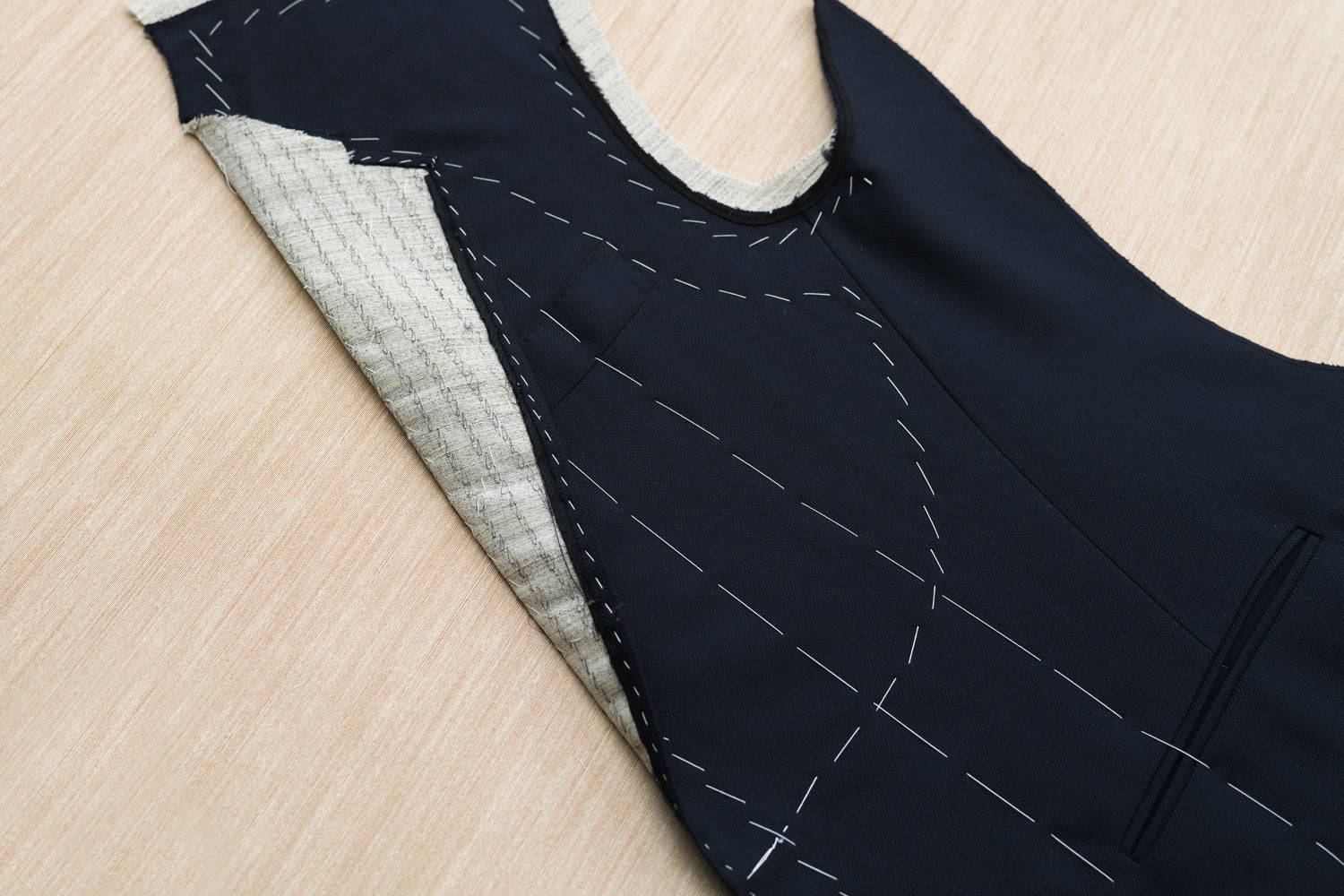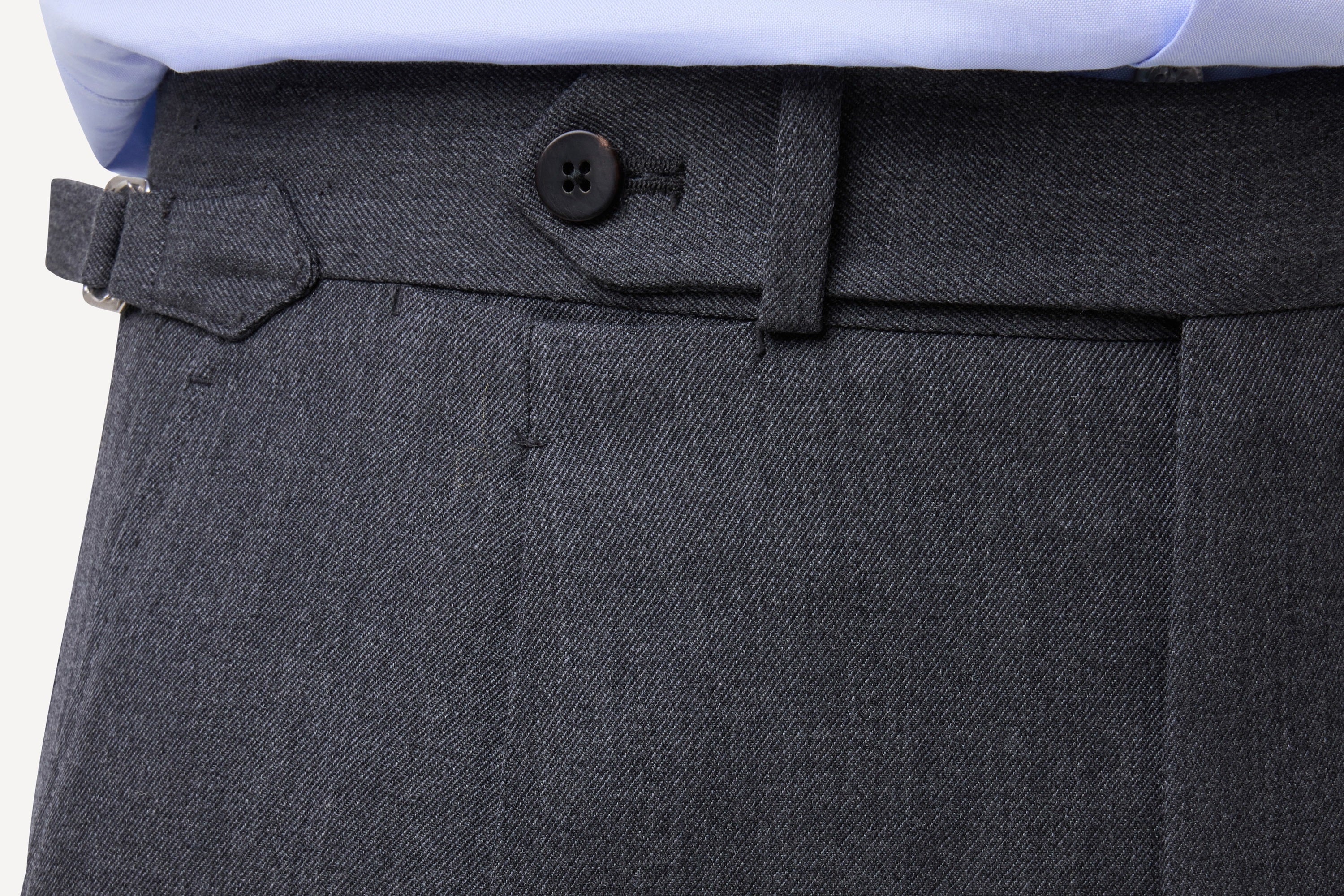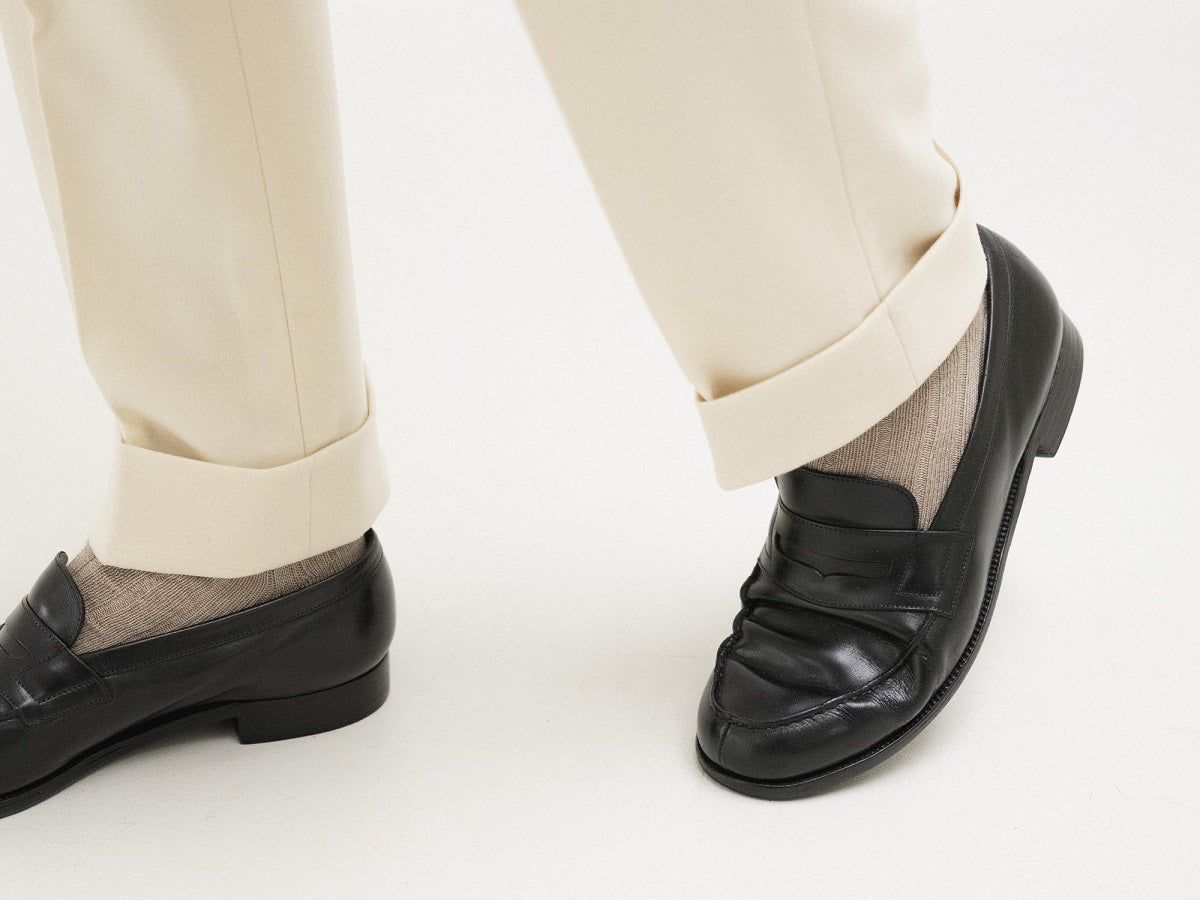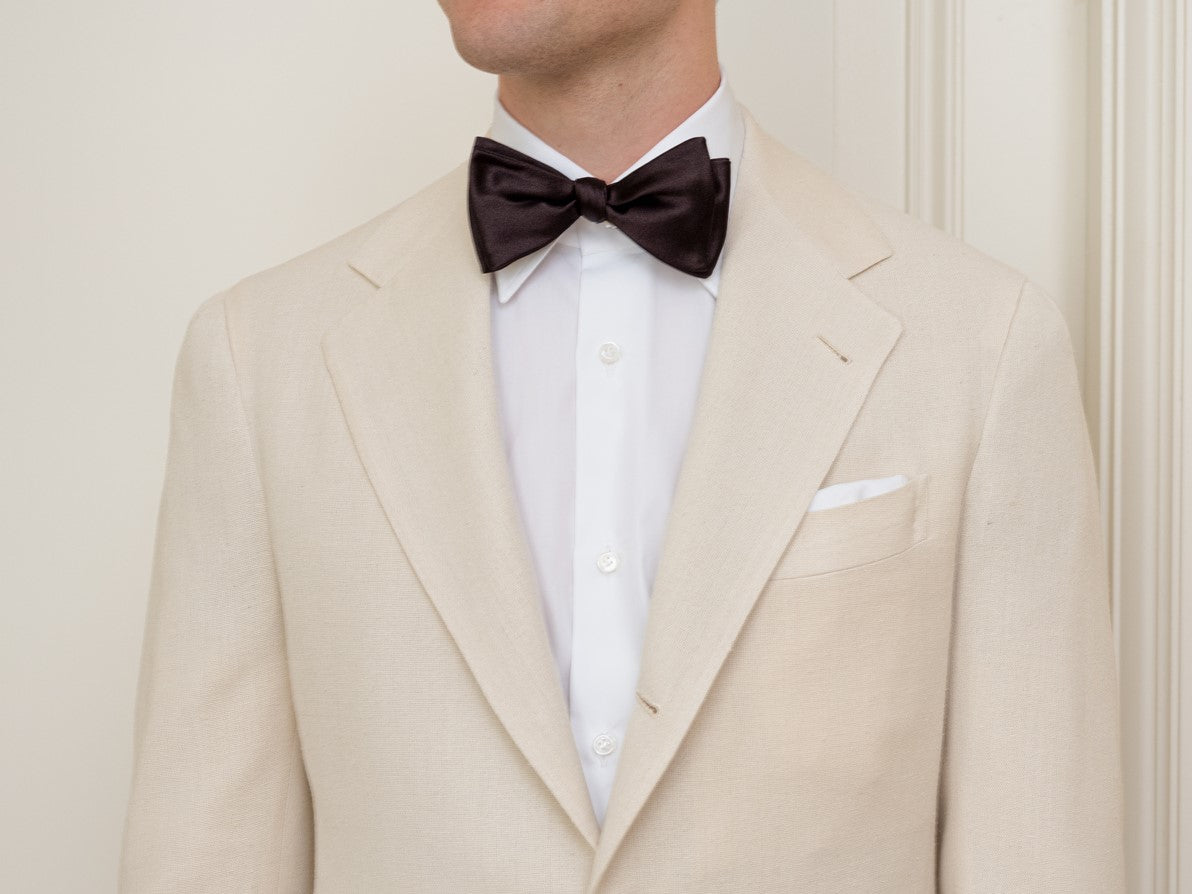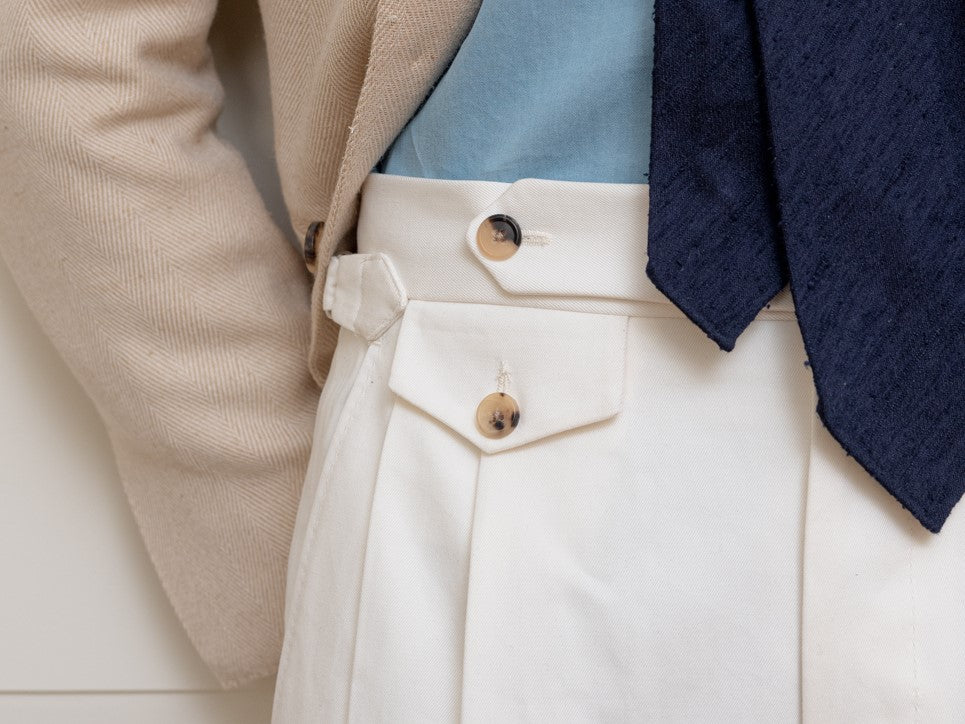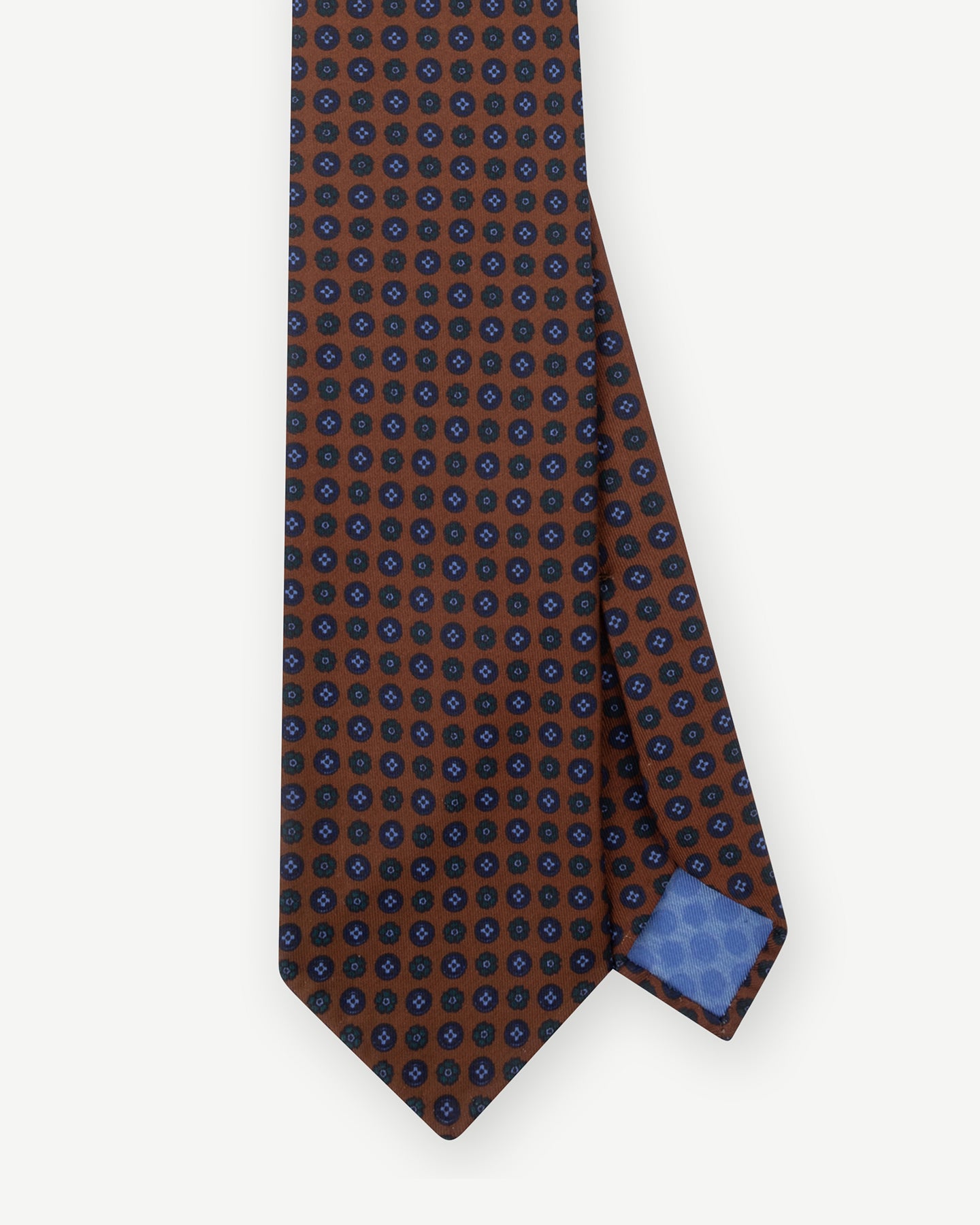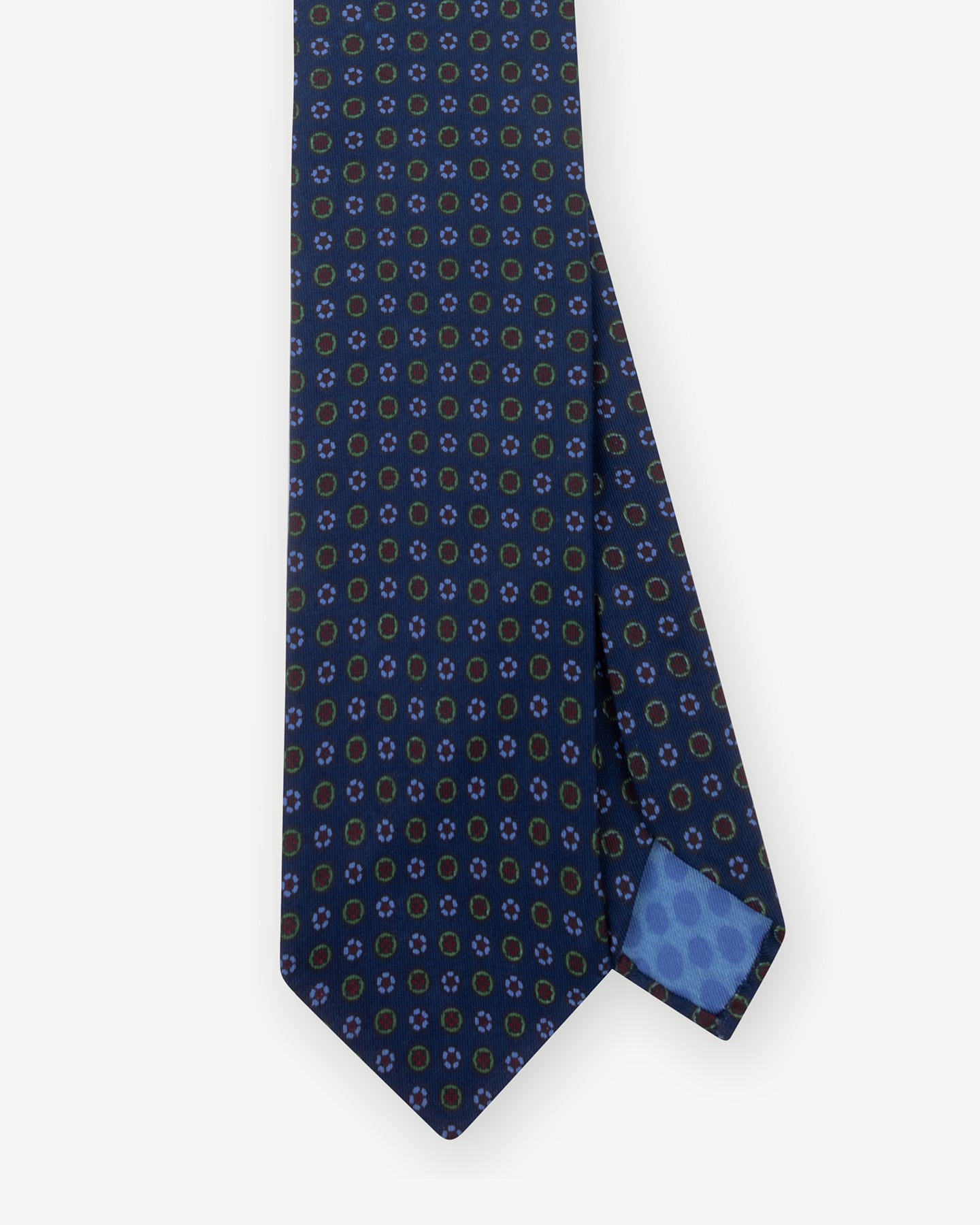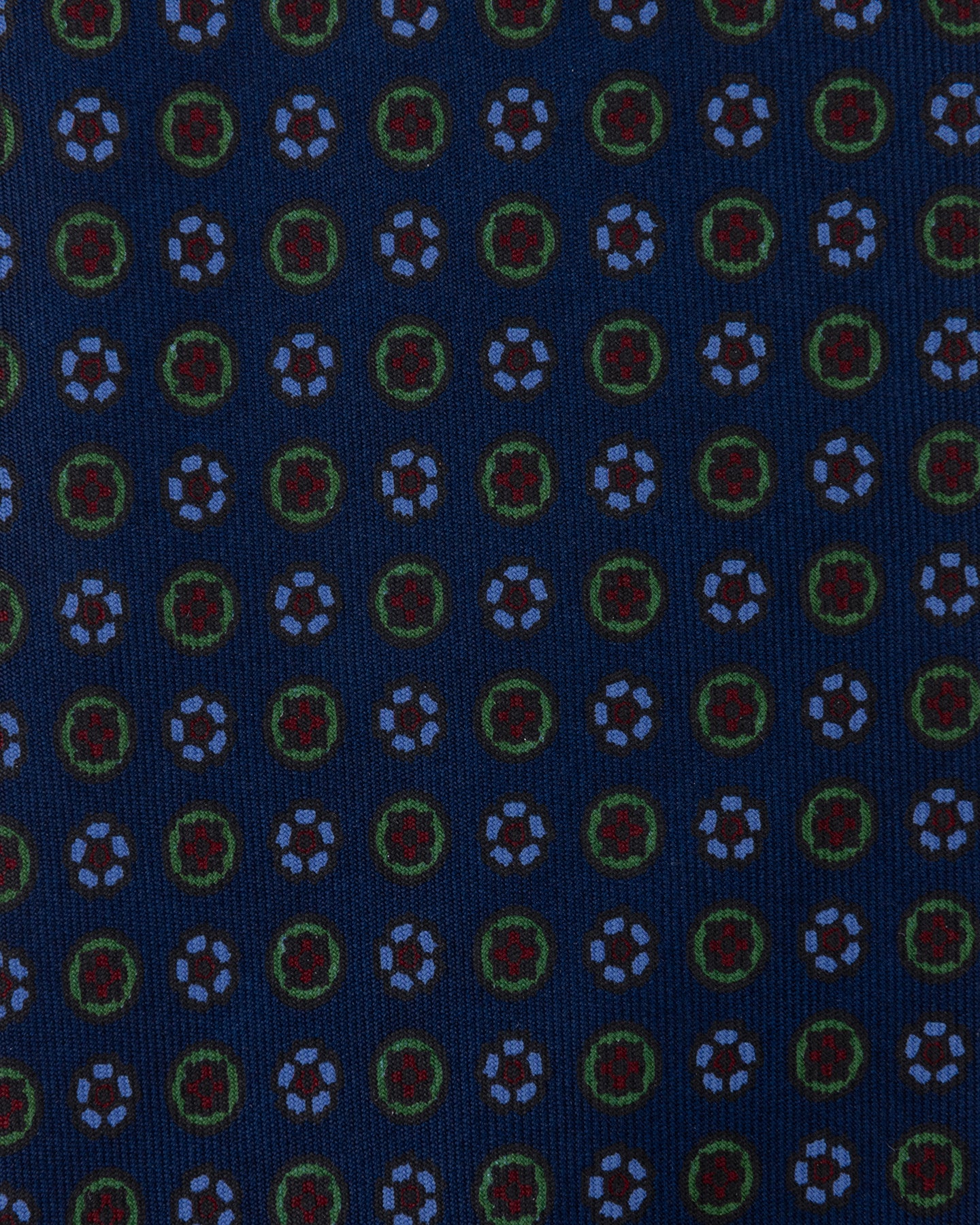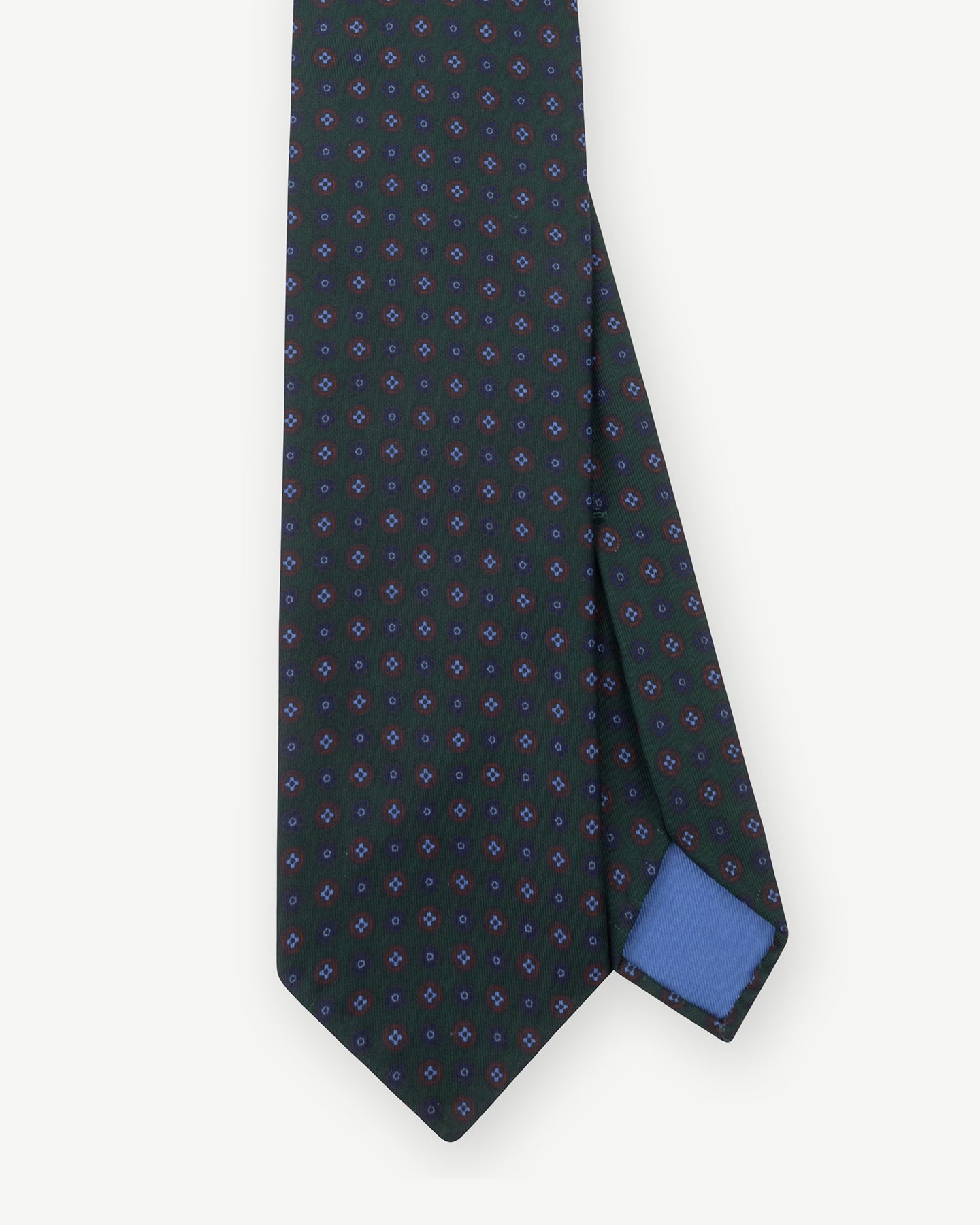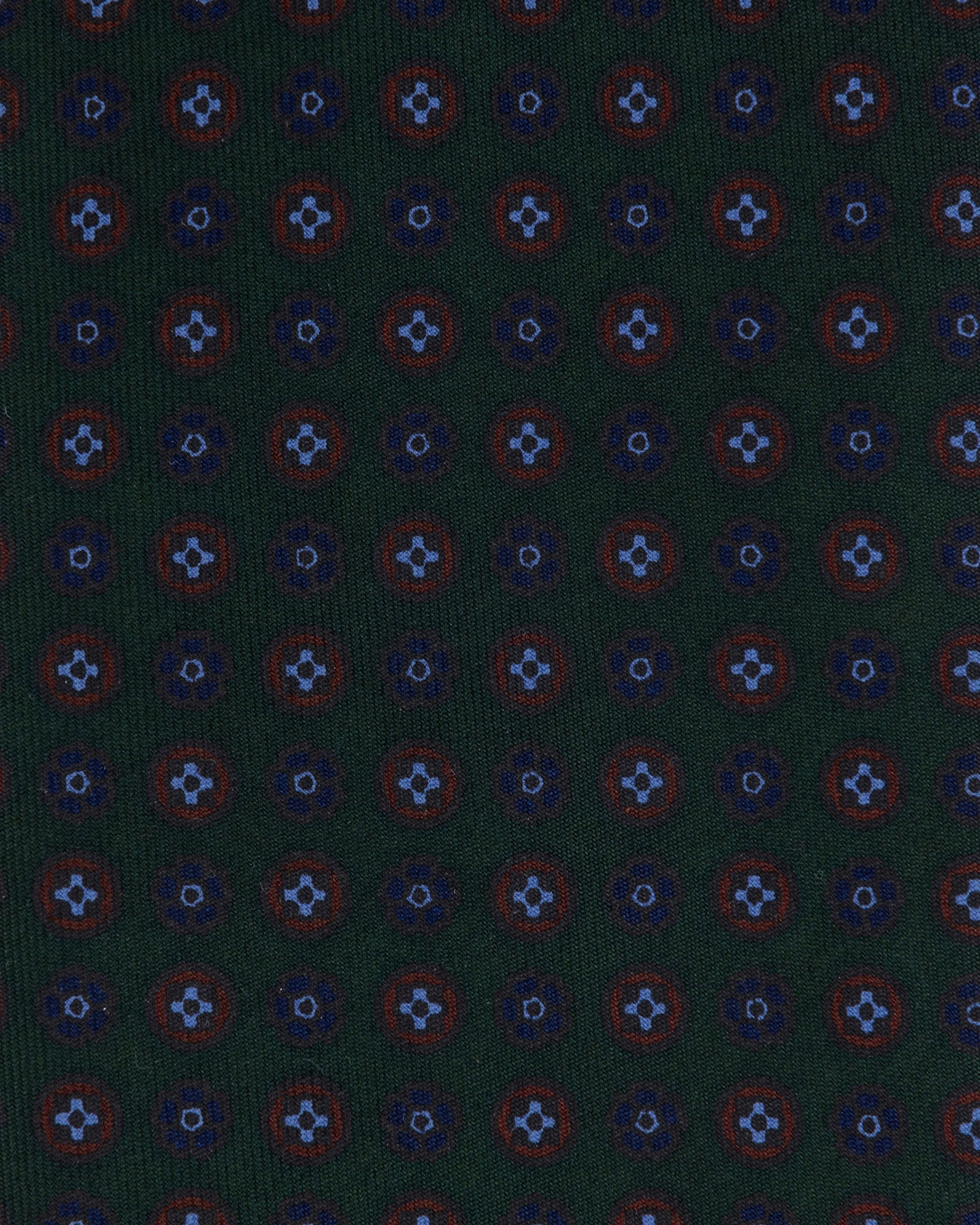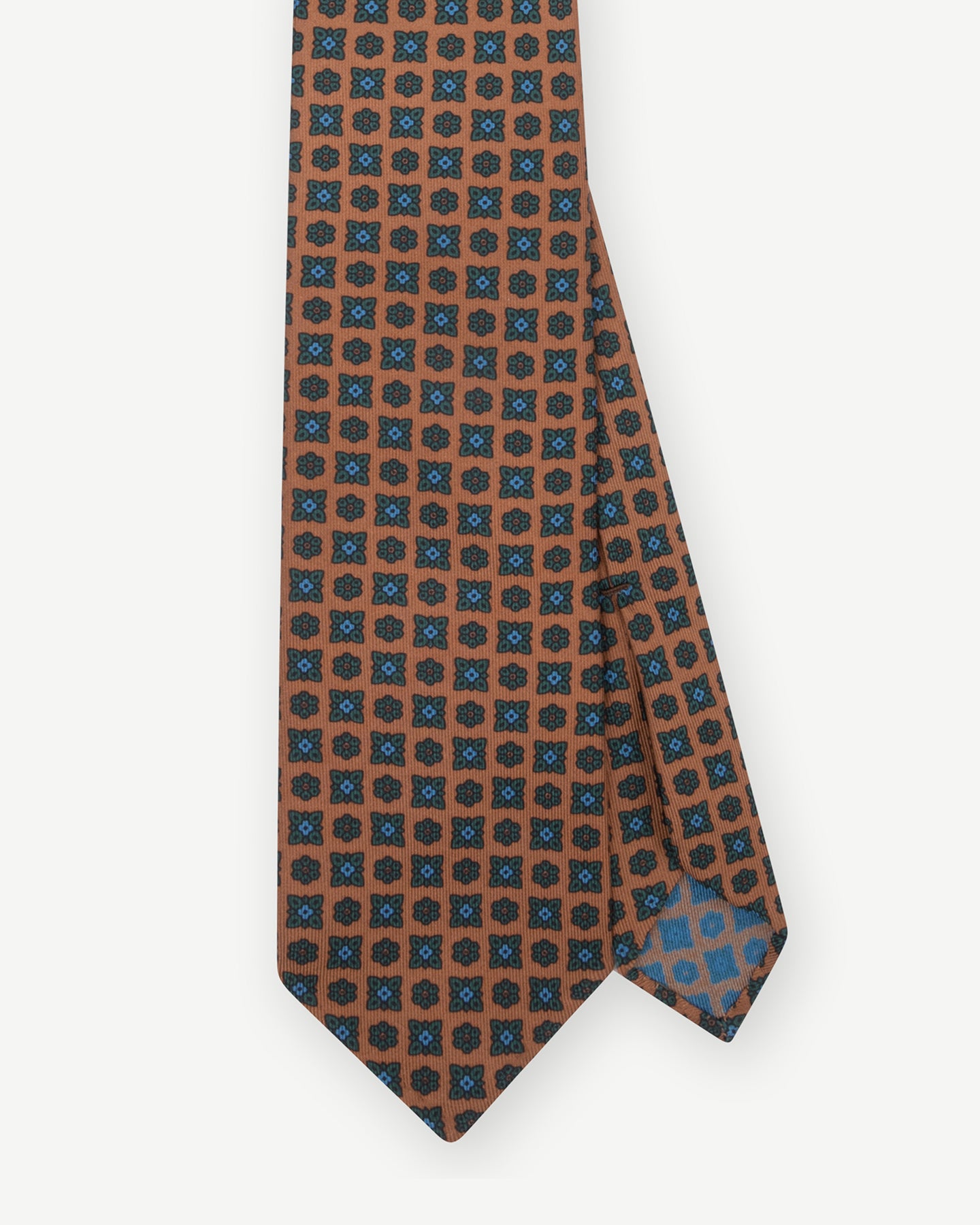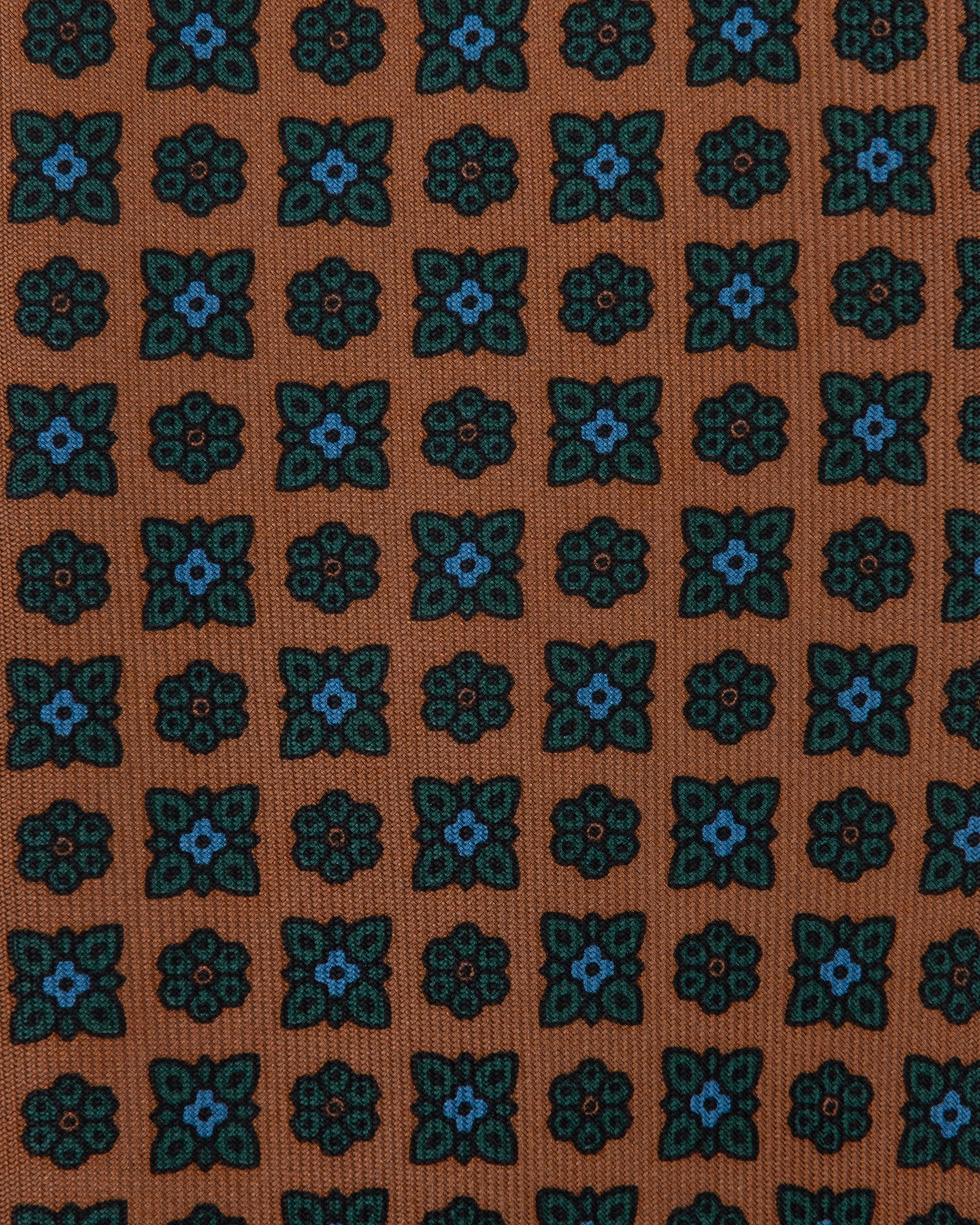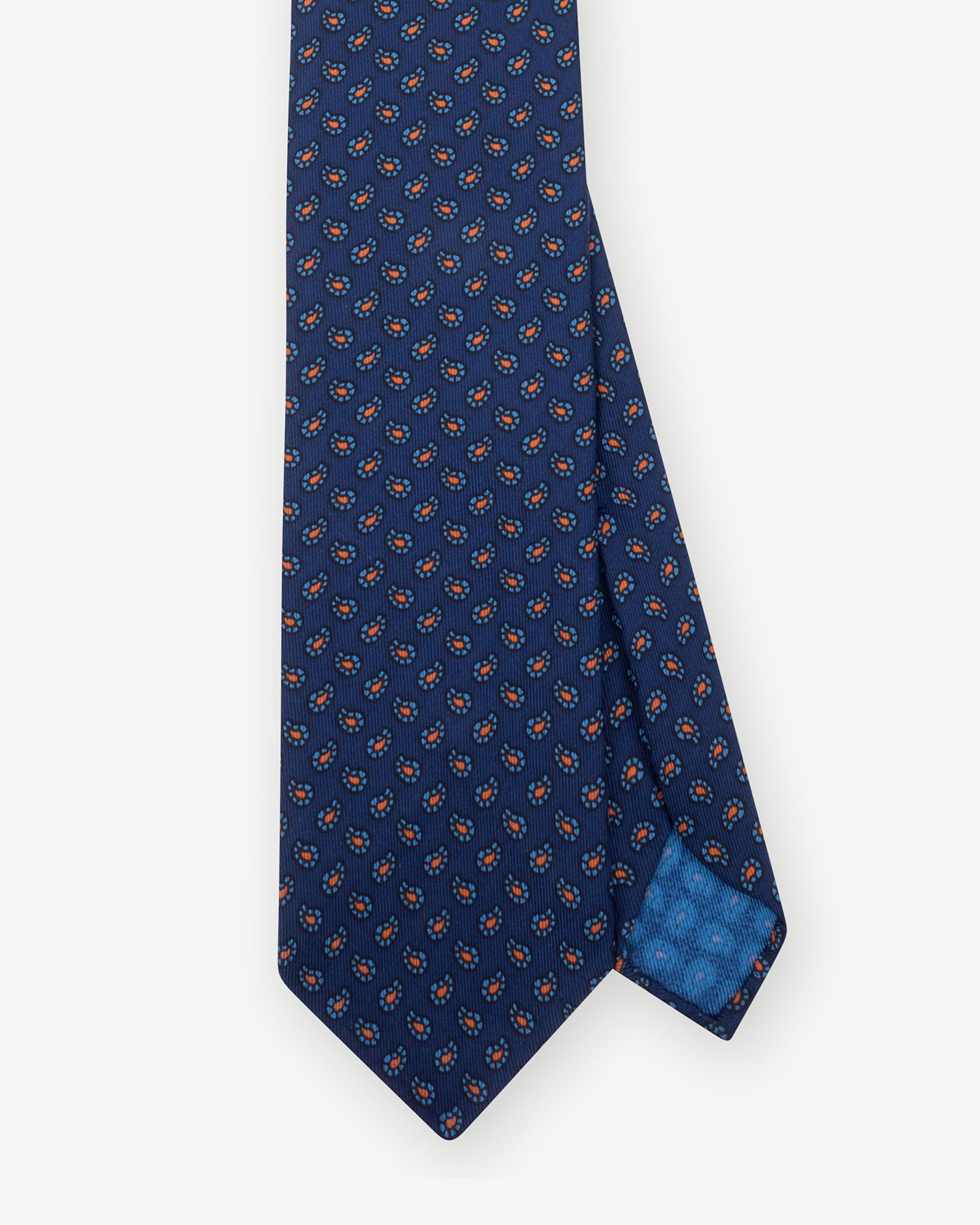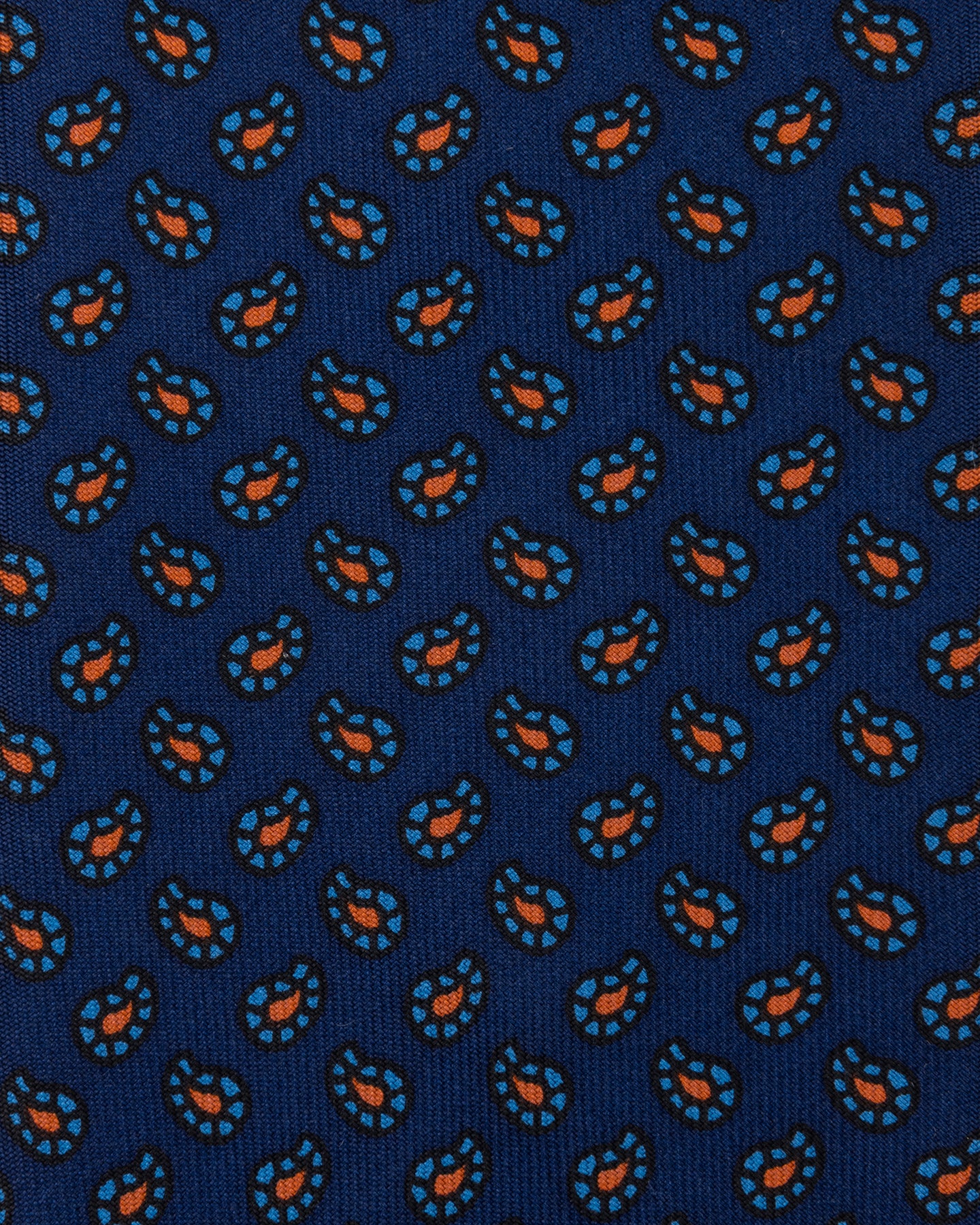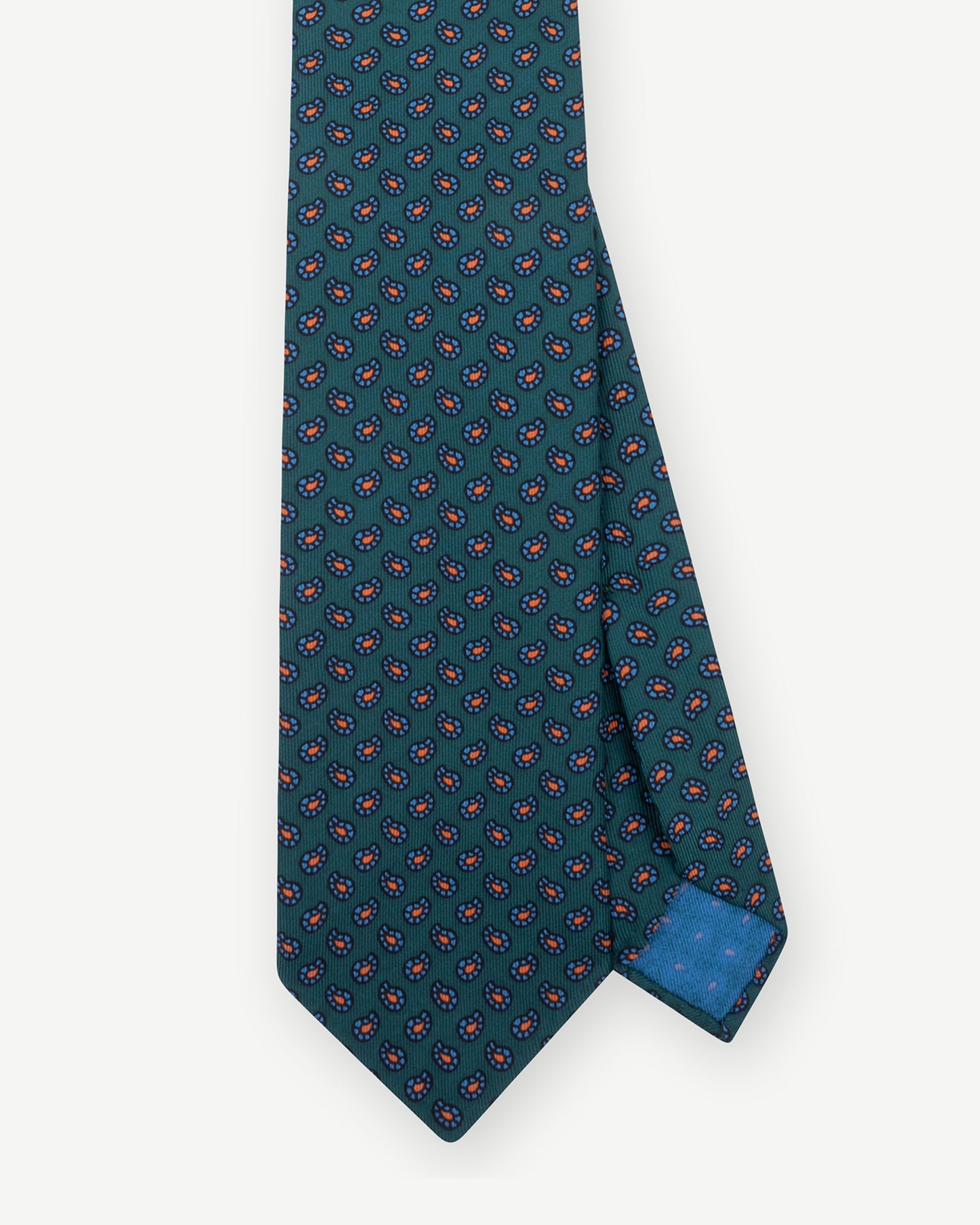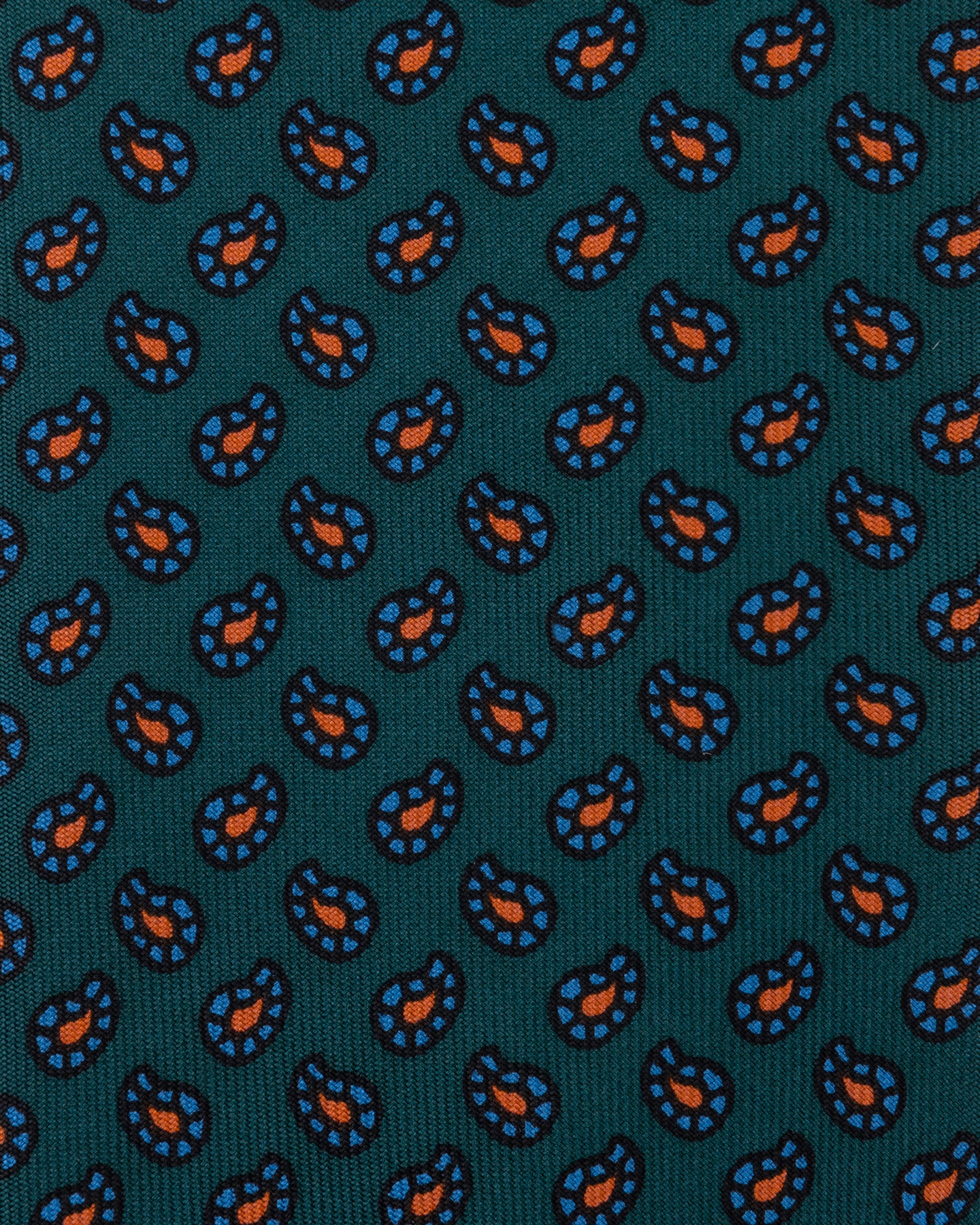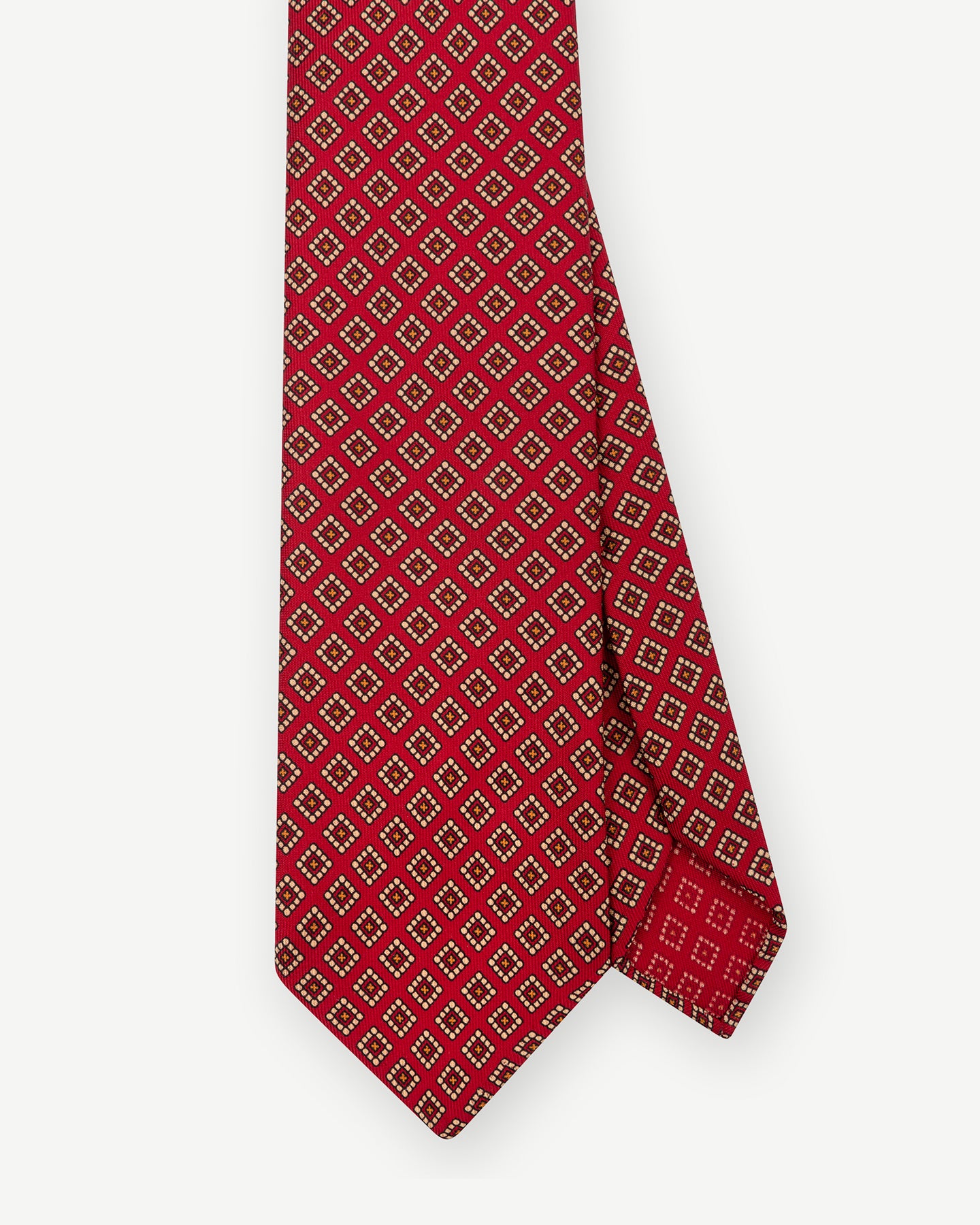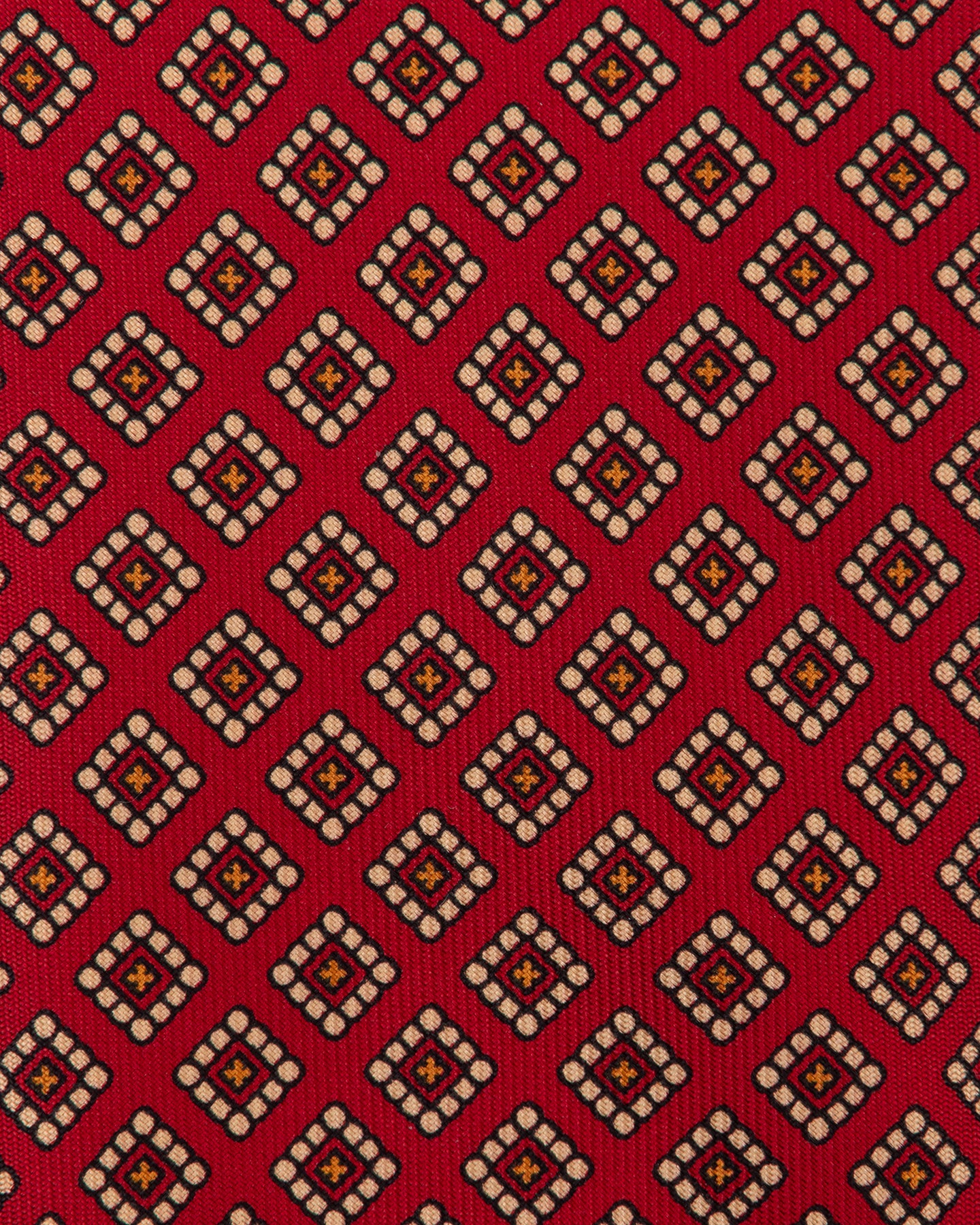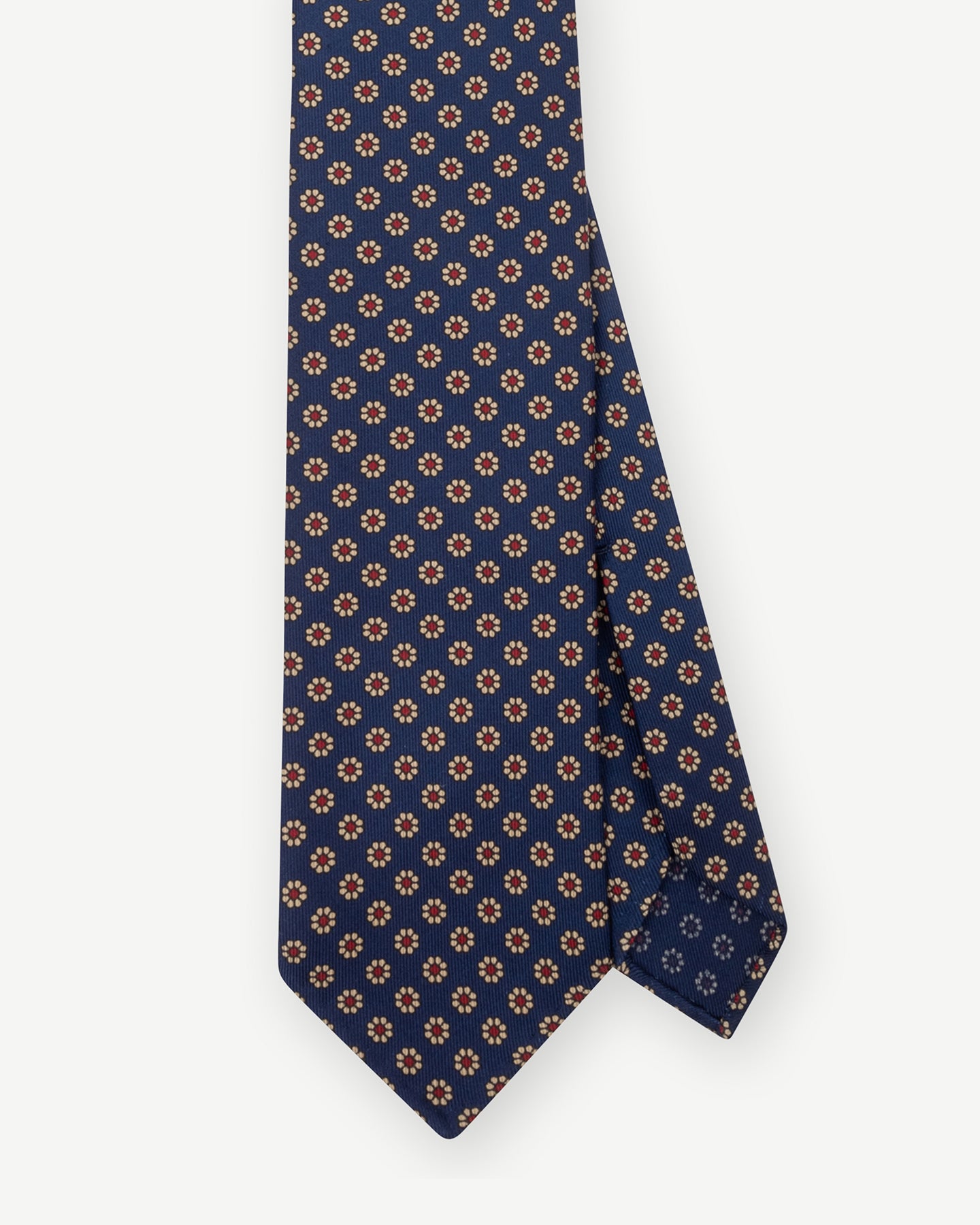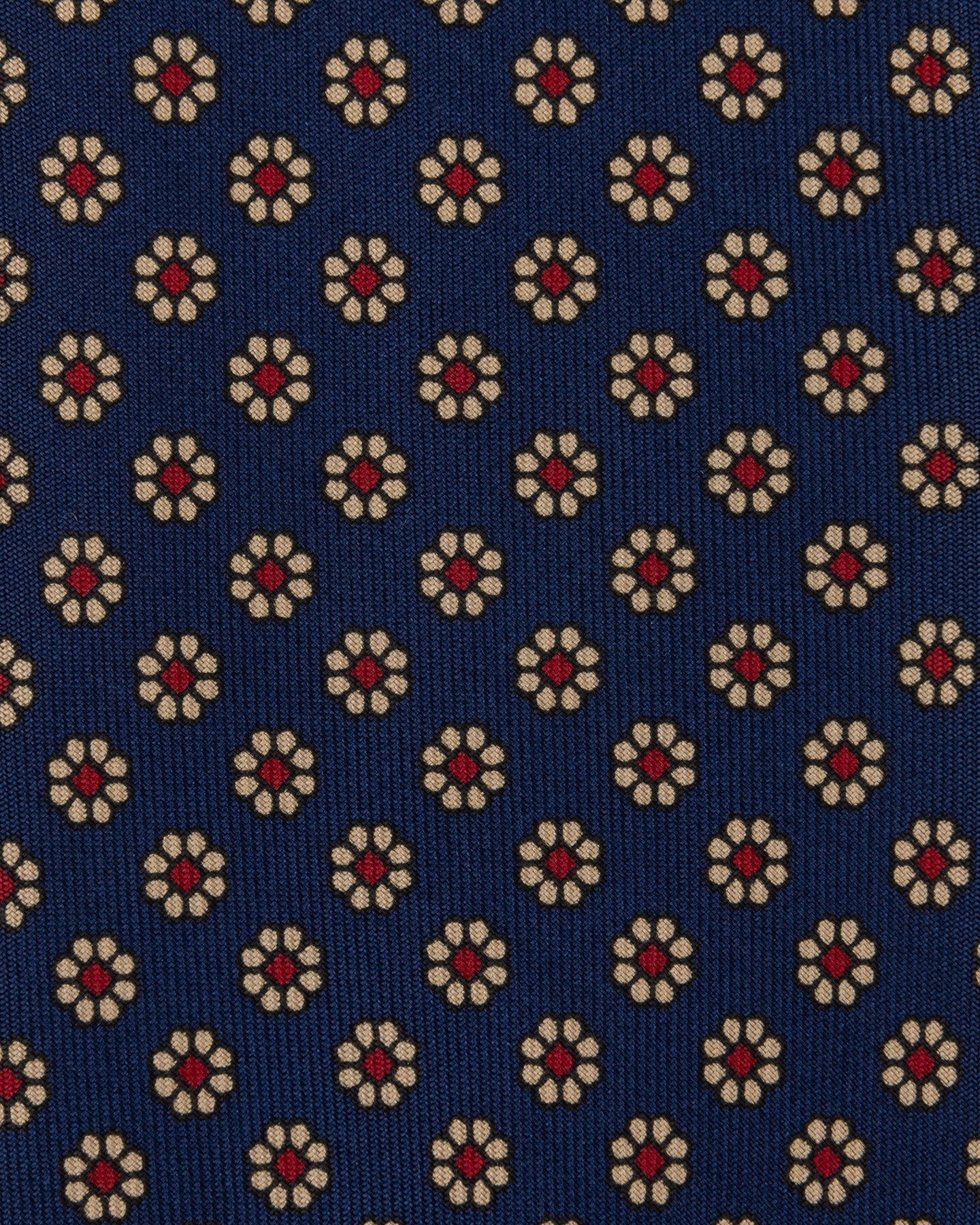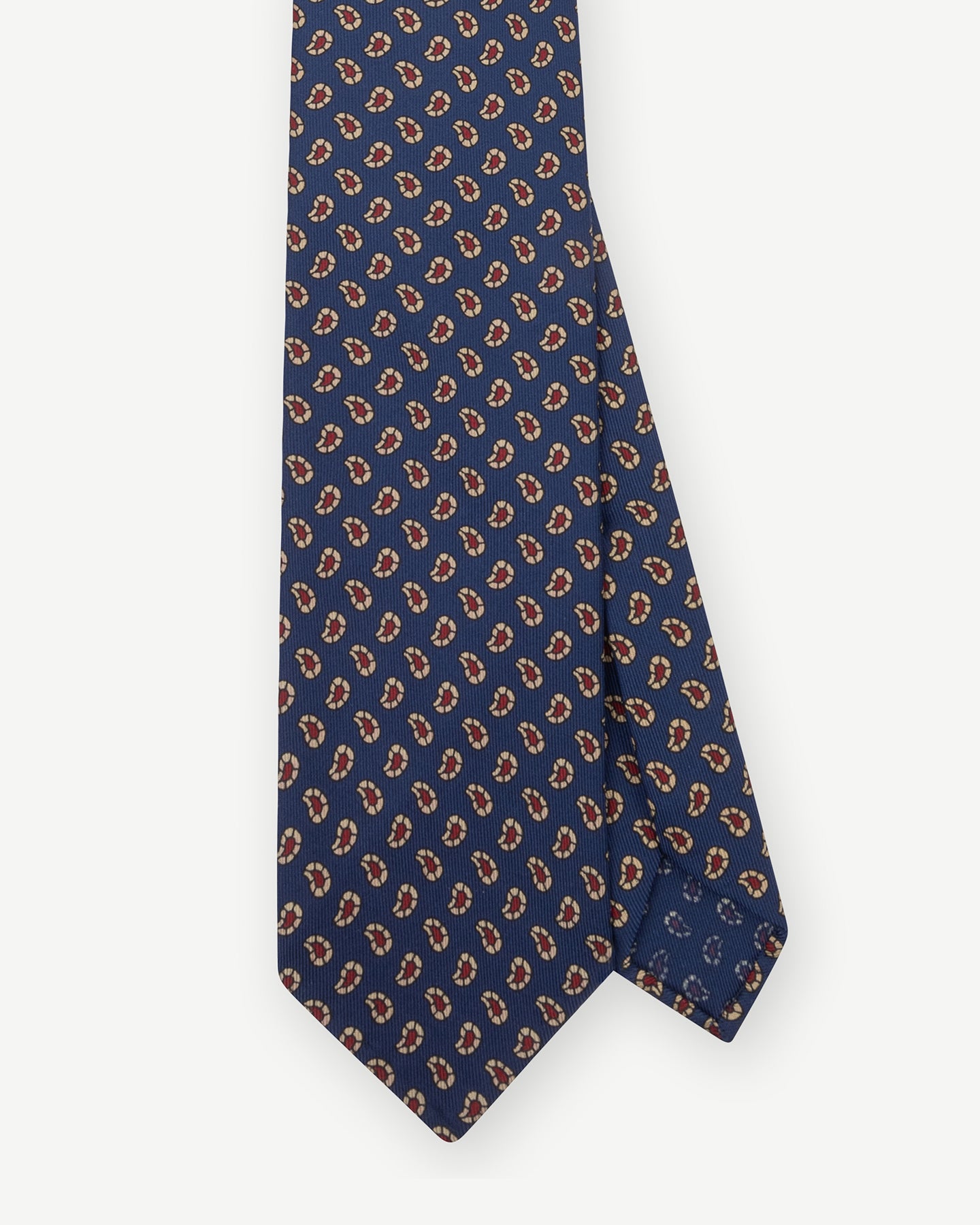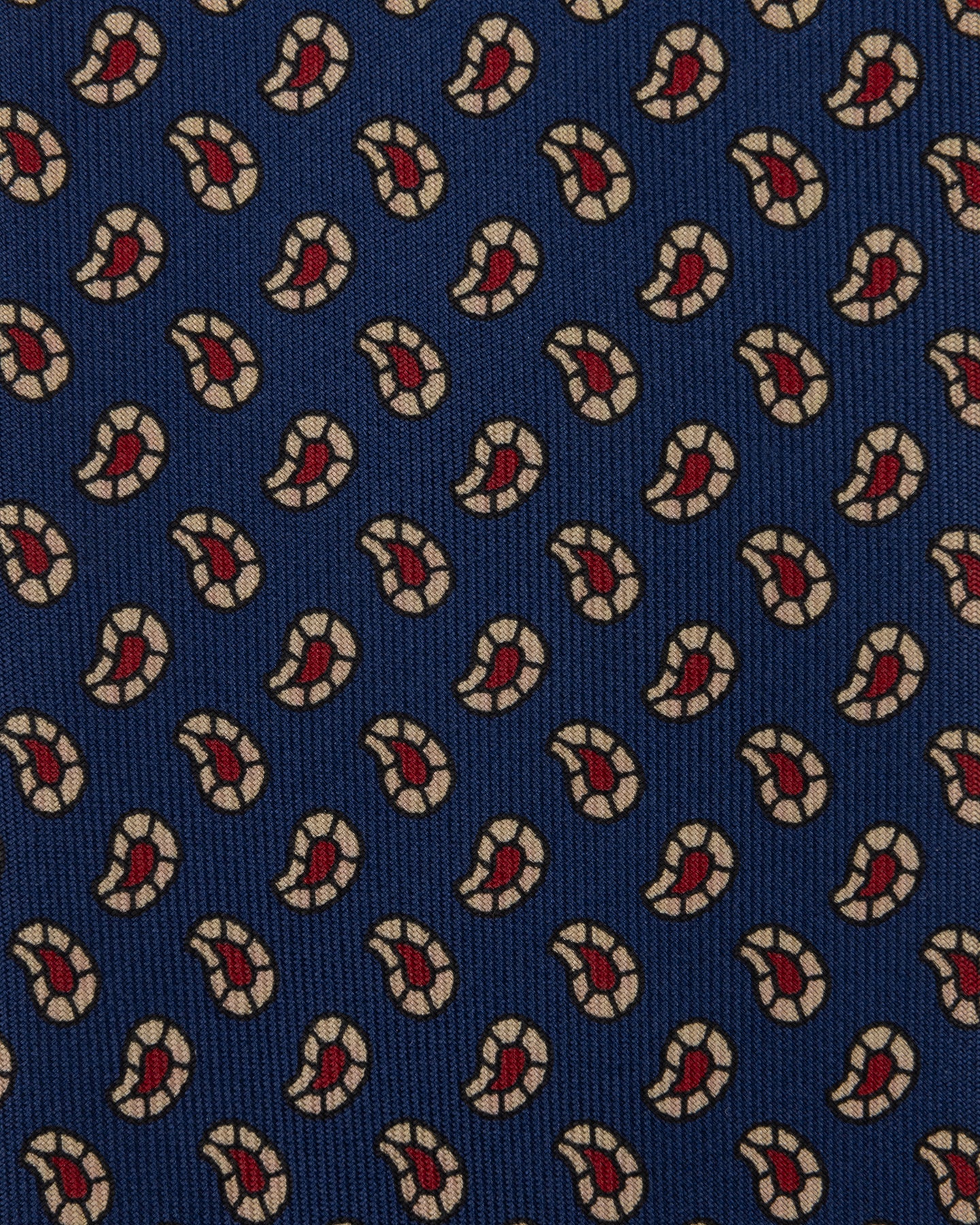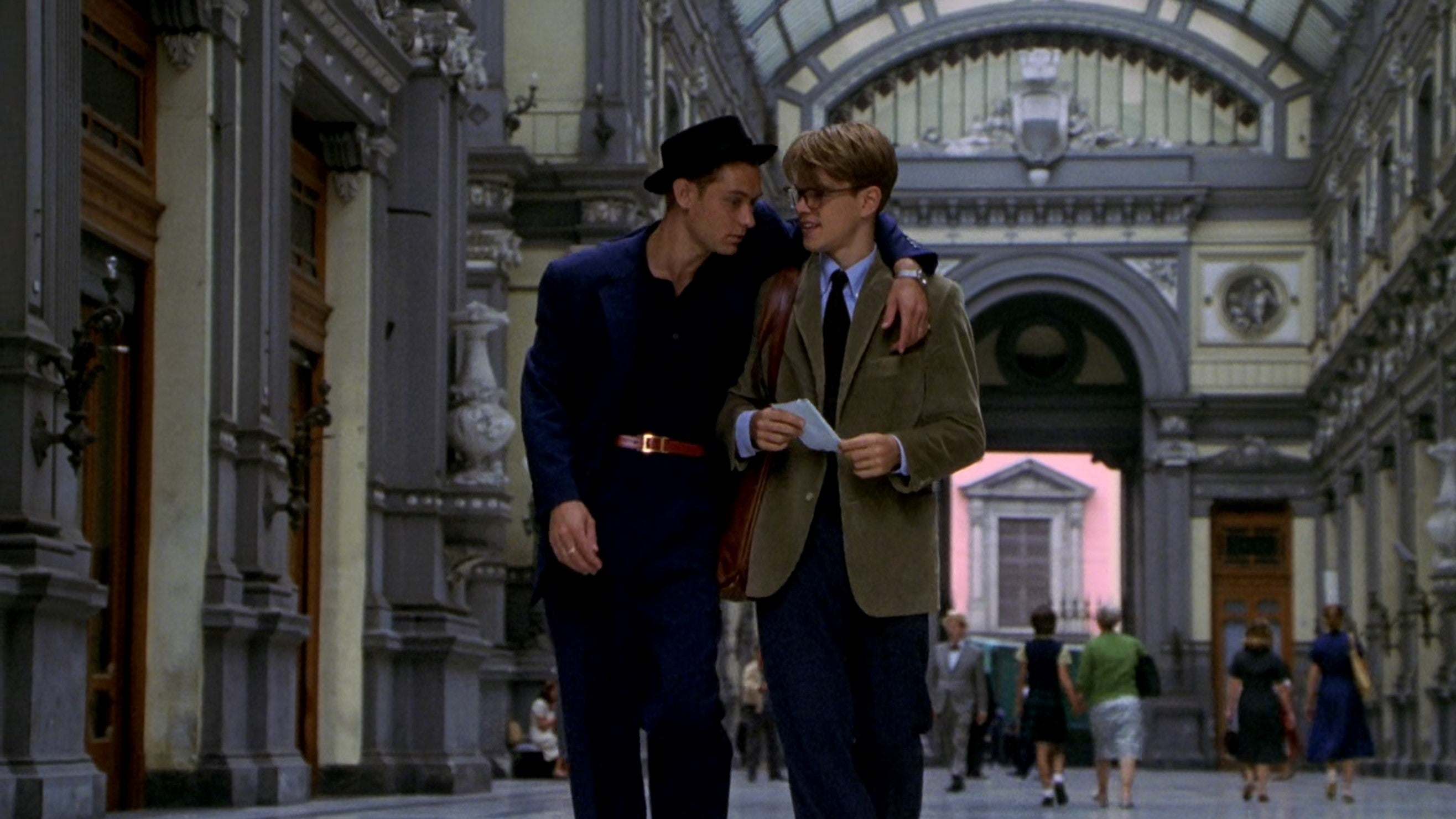
Ancient Madder Silk
Ancient Madder silk ties have been incredibly popular for well over a century, with the dyes (the Ancient Madder) having an even longer history that spans millennia. Even with this enduring appeal, only a few mills still produce them - but those that do, tend to embrace the traditional methods. More on the fascinating background and traditions in a minute.
The ties and silks are known primarily for their rich colours, characteristic paisley, geometric or floral patterns, and ‘chalky’ texture. These patterns are then printed on twill silk fabric treated with gum arabic – a combination that remains a menswear classic among the sartorially inclined. They are distinctive to touch, let alone look at.
The origins of Ancient Madder Silk
The term ‘ancient madder’ relates to the dyes that were traditionally used. ‘Madder’ is an extract from the Rubia tinctorum plant, also known as dyer’s madder or common madder.
 |
 |
| Ancient madder silk rubia tinctorum | Ancient madder British army red coat |
The plant has been used as a dye for millennia, dating back to Egypt in 1500 B.C. and elsewhere in Africa, Italy, Greece, and central Asia. Ancient madder was even used for the famous ‘red coats’ of the British army. Its role in dying leather, wool, cotton, and silk through the ages is why it is described as ‘ancient’.
In the late 1860s, German chemists were able to synthesise madder’s colouring agent, alizarin, which replaced the need for processing the dye from the plant. This is fortunate, as some chemicals in the madder root may have been potentially hazardous.
Ancient Madder silk ties are now made all over the world, although the silk printing originated in England - and traditional printing has been done there ever since. They became especially popular in the 1930s on Ivy style college campuses, and while fashions have changed, the ties remain in high demand.
Why is Madder silk so special?
The naturally extracted dyes from the Madder plant tended to be rich red hues, but modern synthesised versions can provide a wider range of darker colours. These are distinctive, highly saturated darker tints, such as burgundy, forest green, mustard, and violet. The shade of these colours is often described as dusty or muted.
 |
 |
| Clark Gable | James Stewart |
The main patterns tend to be repeated geometric shapes or floral designs that were particularly popular with Ivy leaguers. However, the much more common print is paisley, which became popular in England after being brought over from India.
To prepare the silk, it is first boiled to remove its organic resin or gum. This is followed by the pattern and dyes being printed onto the twill silk before being treated with artificial gum arabic. This gives the material a uniquely soft and ‘chalky’ feel.
Ancient Madder silk is still printed in England, often embracing traditional techniques
The primary hub for the English silk industry was Macclesfield in the north of England. The first silk mill was established there in 1743, and textile manufacturing dominated the town for a century and a half.
 |
 |
| Photo courtesy of Adamley Textiles | Photo courtesy of Adamley Textiles |
Most have sadly closed down, but a couple, such as Adamley Textiles, remain in the area. Adamley has been at the forefront of silk printing for over 50 years, embracing advances such as digital printing but also using more traditional methods like screen printing. The mill even sources its water from the river Bollin, the same as textile mills through the region’s history.
While a few mills still make Ancient Madder silk, Adamley is notable for its hand-printed techniques and traditional screen-printing methods. This creates what many purists would deem to be a more original Madder tie, with a texture that softens the more it is worn.
 |
 |
| Photo courtesy of Adamley Textiles | Photo courtesy of Adamley Textiles |
What is particularly appealing about Adamley’s silk is its adherence to traditional manufacture. After all, if you’re going to buy a classic Ancient Madder silk tie, it makes sense to embrace its history and traditions.
How to wear Ancient Madder silk ties
While distinctive ties might have an abundance of history, they also perfectly fit contemporary looks and fashions. For the more casual look, especially in the colder months, the ties match well with thicker textures, sports coats, or country suits.
The famous ‘Ivy League’ look, for example, can be achieved by matching an Ancient Madder tie with a tweed jacket or suit with an Oxford cloth button-down shirt to create an appealing and classic ensemble.
 |
 |
However, the beauty of Madder is that the ties can also be worn year - round if matched with the correct colour palettes . They fit perfect ly with almost any shade of blue or the always popular grey. For the spring and summer months, they suit rusts, golds, and buff colours, while in the winter, the ties’ hues can lift the darker heavy coats and suits typically worn. In addition, nearly all c olours and designs work with business suits.
Ancient Madder ties have been returning to their previous heights of popular ity recently , thanks to strong demand f rom clothing connoisseurs. The subtle, deep colours and patterns are interesting and attractiv e yet retain a classic sense of style that will never go out of fashion.
